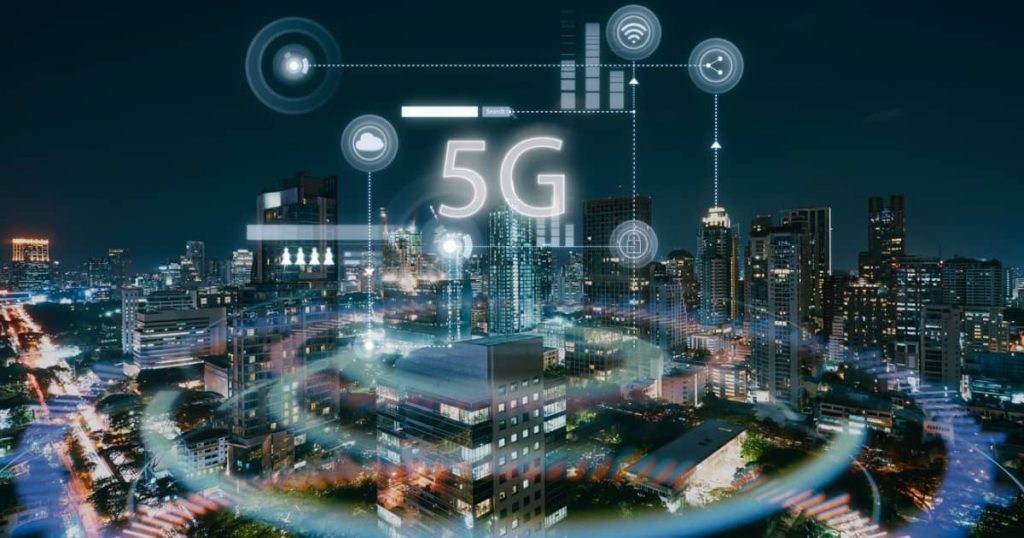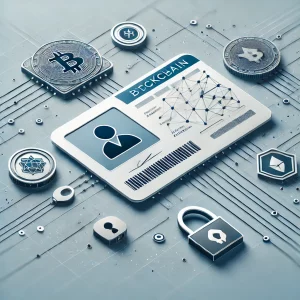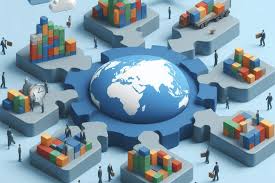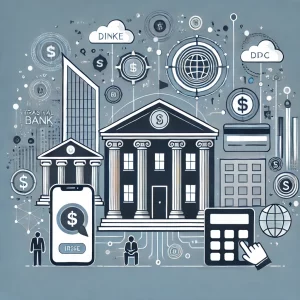How 5G Technology is Powering Smart Cities

5G technology is set to play a vital role in powering smart cities by providing the high-speed, low-latency connectivity needed to integrate advanced digital infrastructure. With its ability to support massive data transmission and connect billions of devices, 5G enables the development of smarter urban solutions, ranging from intelligent transportation systems to energy-efficient buildings. As smart cities continue to evolve, 5G is the driving force behind enhanced connectivity, real-time data processing, and innovative services that improve the quality of life for urban residents.
1. High-Speed Connectivity and Real-Time Data Processing
One of the most significant advantages of 5G technology is its ability to deliver high-speed connectivity, with data transfer rates up to 100 times faster than 4G. This allows smart cities to process vast amounts of data in real time, enabling responsive services and improved decision-making.
Examples of real-time applications:
- Traffic management: 5G-powered sensors and cameras can collect real-time traffic data, helping city authorities monitor congestion and adjust traffic signals accordingly. This reduces travel time, minimizes fuel consumption, and alleviates road congestion.
- Emergency response: With real-time data, emergency services can quickly assess situations, deploy resources more efficiently, and communicate seamlessly with responders in the field. This can significantly improve the response times and effectiveness of public safety services.
2. Supporting the Internet of Things (IoT)
The Internet of Things (IoT) forms the backbone of smart cities, connecting devices like sensors, cameras, and meters to collect data and automate processes. 5G enhances IoT capabilities by supporting a much higher density of connected devices than previous networks.
Examples of IoT applications in smart cities:
- Smart waste management: IoT-enabled waste bins can detect when they are full and send alerts to waste management services. This allows for optimized waste collection schedules, reducing costs and environmental impact.
- Connected streetlights: Smart streetlights equipped with sensors can adjust brightness based on pedestrian activity, weather conditions, or time of day. This leads to energy savings and safer public spaces.
3. Enabling Intelligent Transportation Systems
5G technology is a key enabler for intelligent transportation systems, providing the connectivity required for autonomous vehicles, smart traffic management, and vehicle-to-everything (V2X) communication. These systems can help reduce accidents, enhance traffic flow, and lower emissions.
Applications of 5G in transportation:
- Autonomous vehicles: With ultra-low latency, 5G allows autonomous cars to communicate with each other and the surrounding infrastructure in real time. This enables safer navigation and more efficient traffic management.
- Smart parking solutions: 5G-enabled sensors in parking lots can guide drivers to available spots, reducing the time spent searching for parking and easing congestion in busy urban areas.
4. Enhancing Public Safety and Security
The deployment of 5G technology supports advanced surveillance systems and emergency communication networks, enhancing public safety in smart cities. Real-time data from connected cameras, drones, and sensors can be used to monitor public spaces, detect potential threats, and respond quickly to emergencies.
Examples of 5G applications in public safety:
- Surveillance and monitoring: High-definition cameras powered by 5G can stream video in real time to law enforcement agencies, helping them monitor crowded areas, detect suspicious activities, and prevent crime.
- Disaster response: In the event of natural disasters, 5G-enabled drones can be deployed to assess damage, locate survivors, and deliver essential supplies to affected areas. This accelerates response efforts and enhances coordination.
5. Energy Efficiency and Environmental Monitoring
5G technology can help cities reduce energy consumption and monitor environmental conditions more effectively. With smart grids and connected infrastructure, cities can optimize energy usage and lower greenhouse gas emissions.
Energy and environmental applications:
- Smart grids: 5G enables real-time monitoring and management of electricity grids, allowing utilities to balance supply and demand more efficiently. This helps reduce energy waste and supports the integration of renewable energy sources.
- Air quality monitoring: Connected sensors can measure air pollution levels across the city, providing valuable data for policymakers to implement environmental regulations and protect public health.
6. Revolutionizing Healthcare and Public Services
5G technology is transforming the delivery of healthcare and public services in smart cities by enabling telemedicine, remote monitoring, and connected health devices. With 5G, healthcare providers can offer services that were previously limited by connectivity constraints.
Healthcare applications of 5G:
- Telemedicine: 5G’s high-speed connectivity allows doctors to conduct remote consultations, perform real-time diagnostics, and even guide robotic surgeries. This improves access to healthcare, especially in underserved areas.
- Wearable health devices: 5G-powered wearables can continuously monitor patients’ vital signs and send real-time alerts to healthcare providers in case of abnormalities. This enables timely medical interventions and better patient outcomes.
Challenges and Considerations
While the potential of 5G in smart cities is significant, there are challenges that must be addressed:
- Infrastructure Costs: Building the necessary infrastructure for 5G, including base stations and network nodes, requires significant investment. Cities need to collaborate with telecom providers to deploy the technology cost-effectively.
- Data Privacy and Security: With more connected devices collecting vast amounts of data, ensuring data privacy and cybersecurity is crucial to protect citizens and prevent breaches.
- Network Reliability: Although 5G promises high-speed connectivity, network reliability may vary depending on location and the availability of supporting infrastructure.
Conclusion
5G technology is powering the development of smart cities by providing the connectivity needed to integrate IoT, enhance public safety, and improve transportation systems. By enabling real-time data processing and supporting a vast network of connected devices, 5G facilitates smarter, more sustainable urban solutions that enhance quality of life. As cities continue to adopt 5G, addressing challenges related to infrastructure, data privacy, and network reliability will be essential to fully realize the potential of smart cities driven by this transformative technology.





